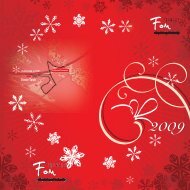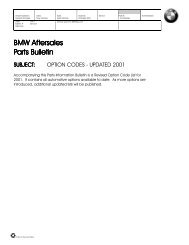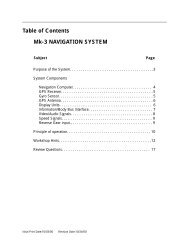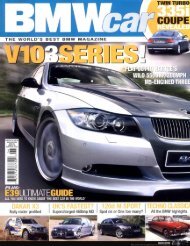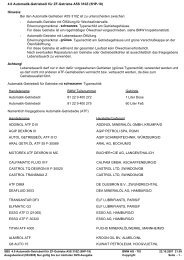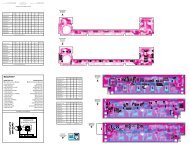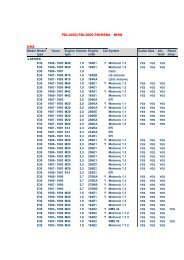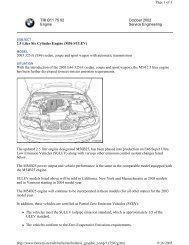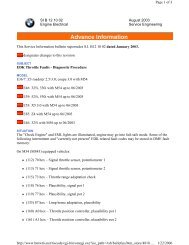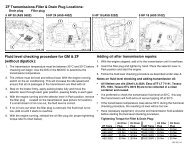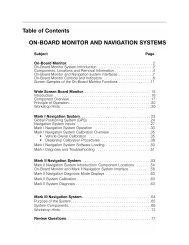Electronic Transmission Control Introduction 1-10-03.qxd - GE39
Electronic Transmission Control Introduction 1-10-03.qxd - GE39
Electronic Transmission Control Introduction 1-10-03.qxd - GE39
You also want an ePaper? Increase the reach of your titles
YUMPU automatically turns print PDFs into web optimized ePapers that Google loves.
Downshift Protection<br />
Downshift protection is a feature that prevents unwanted or improper downshifting. If the<br />
range selector were moved to a lower gear at a high road speed, engine damage could<br />
occur from an unintended over-rev. This feature will prevent engine over-rev by delaying or<br />
preventing the unwanted downshift until the proper road speed is achieved. The result is<br />
increased safety by preventing unwanted deceleration slip.<br />
Reverse Lockout<br />
The TCM will lockout reverse above 3 MPH to prevent drivetrain damage. The range selector<br />
lever will go into the reverse detent, but reverse will not engage. This is achieved by the<br />
TCM through hydraulic intervention. The transmission will appear to be in neutral.<br />
Note: Reverse Lockout is not operative when in failsafe.<br />
Engine Warm Up Cycle<br />
The transmission shift points are modified after cold start to raise engine RPM during shifting.<br />
This allows for a faster engine warm up and reduction of catalyst warm up time. The<br />
TCM uses the transmission oil temperature information to determine the implementation of<br />
this function.<br />
The warm up phase program will be terminated if any of the following conditions exist:<br />
• The vehicle exceeds 25 MPH or<br />
• <strong>Transmission</strong> oil temperature exceeds 60 Degrees Celsius or<br />
• A Maximum of three minutes is exceeded.<br />
ASC/DSC Shift Intervention<br />
During ASC/DSC regulation upshifts are inhibited to enhance the effectiveness of tractional<br />
control. Depending upon vehicle model, this action can take place via the CAN bus or a<br />
dedicated shift intervention signal wire. On later model vehicles where the ASC/DSC module<br />
is connected to the CAN bus, the shift intervention signal is sent to the TCM via CAN.<br />
Torque Reduction<br />
In order to allow a smoother shift and reduce load on the transmission, engine torque is<br />
reduced during shifting. This is accomplished by a signal that is sent from the TCM (EGS)<br />
to the ECM (DME) during shifting. The ECM will retard timing momentarily during the shift<br />
for a few milliseconds. This timing change is transparent to the driver. Depending upon<br />
application, the torque reduction signal is sent over a dedicated wire or a signal over the<br />
CAN bus.<br />
25<br />
<strong>Electronic</strong> <strong>Transmission</strong> <strong>Control</strong>




